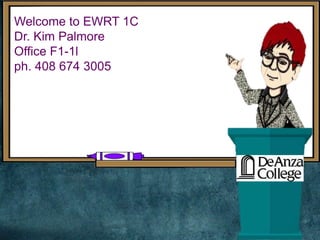This document provides an overview and instructions for an English literature and composition hybrid class. It introduces the instructor and gives contact information. It outlines what a hybrid class entails and how the course will utilize an online platform. It details required texts and materials, course expectations and policies, and a tentative course schedule. Key aspects of the class include submitting writing assignments online, completing weekly reading and posting response writings called QHQs (Question-Hypothesis-Question), and exploring various literary theories with a focus on New Criticism.


































